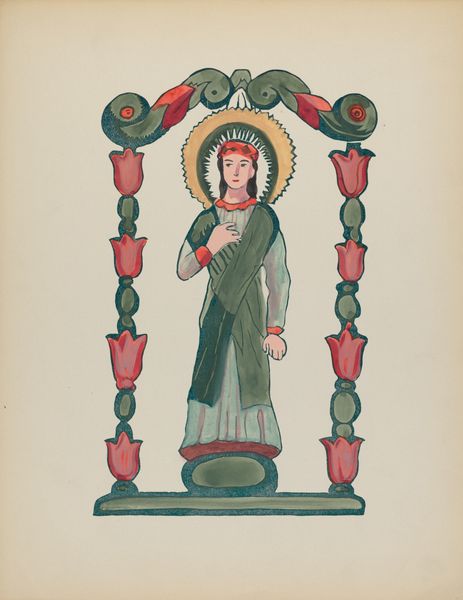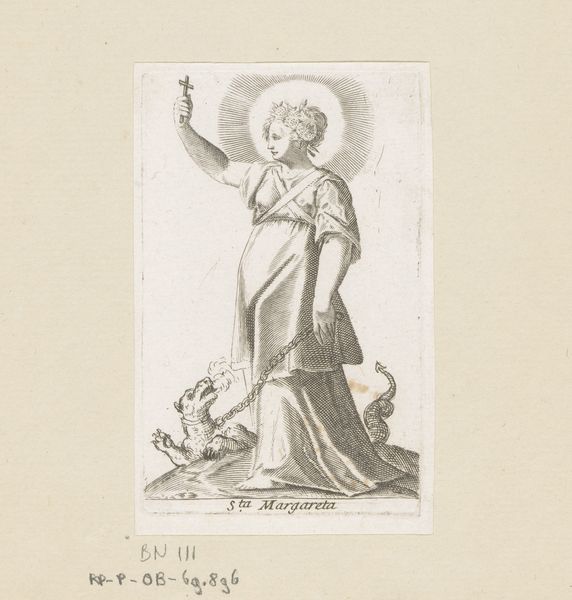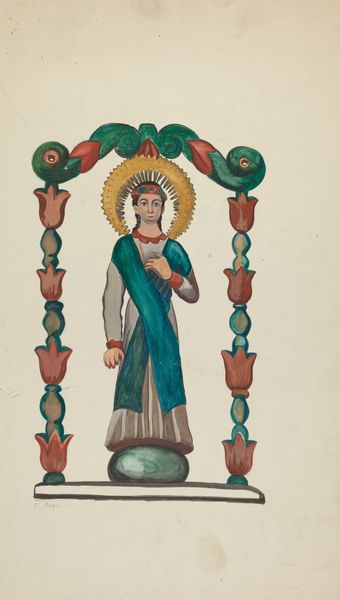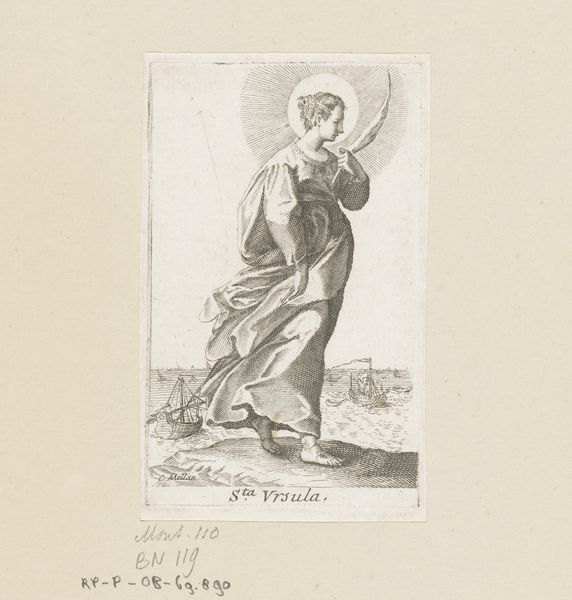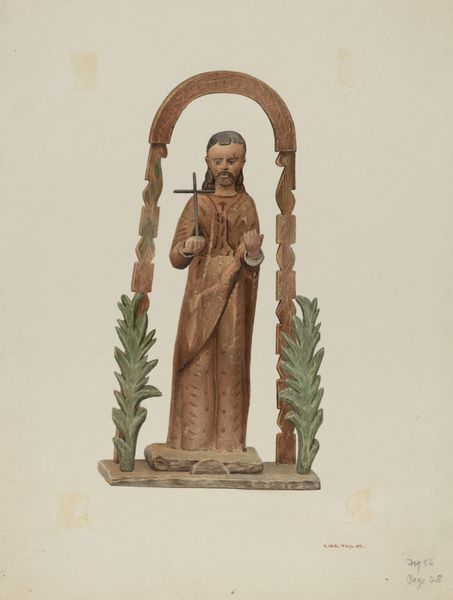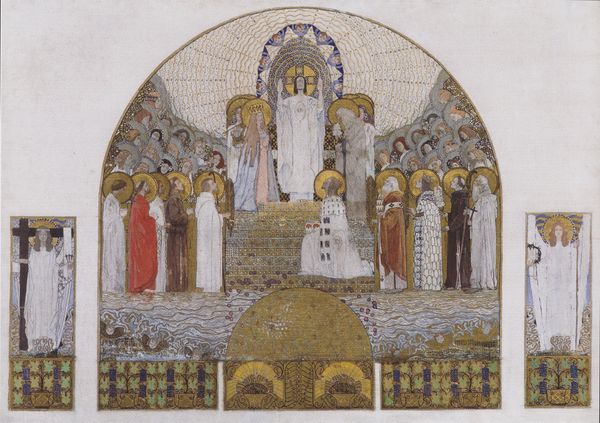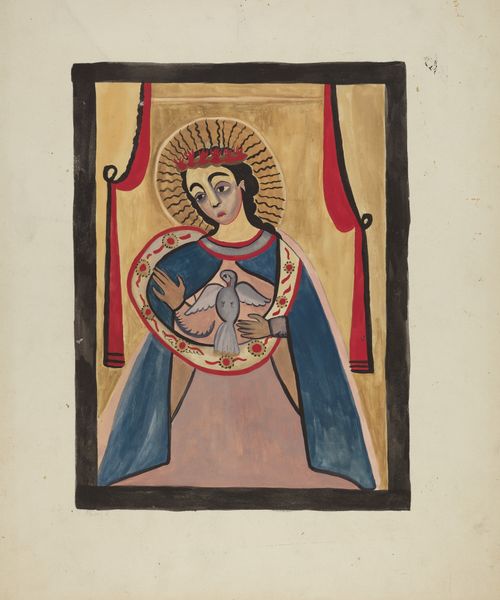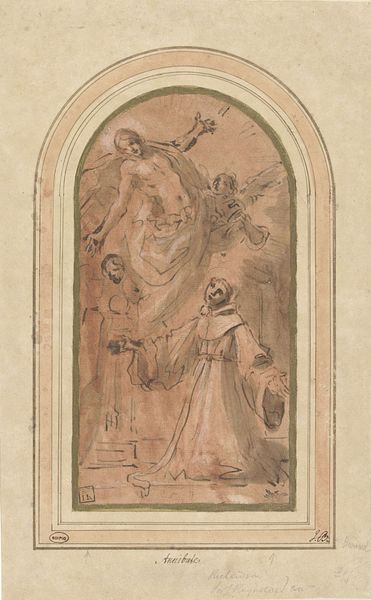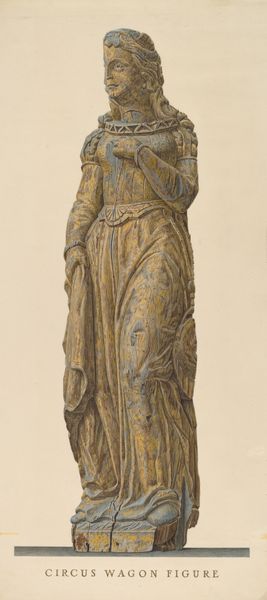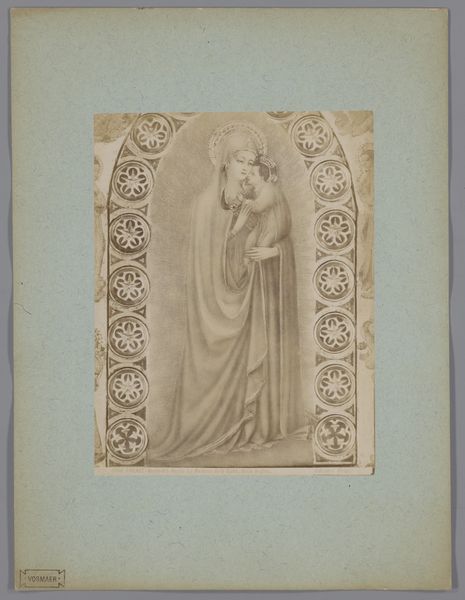
drawing, watercolor
#
portrait
#
drawing
#
water colours
#
figuration
#
oil painting
#
watercolor
#
coloured pencil
#
academic-art
#
watercolor
Dimensions: overall: 35.5 x 24.4 cm (14 x 9 5/8 in.) Original IAD Object: 54"high; 25"circ. at waist; circ. at base, 48"
Copyright: National Gallery of Art: CC0 1.0
Curator: Standing before us is "Statue of Santo (probably St. Dominic)", a 1941 watercolor by Juanita Donahoo. Editor: It’s surprisingly earthy. The watercolor rendering almost mimics the texture of aged wood or stone, it gives a sort of solidity to something normally so ephemeral. Curator: Precisely. The choice of watercolor is interesting considering the subject; the Santo statues themselves are key components of religious expression in specific cultural contexts. Their materiality matters. Editor: Tell me more. How were they used, these Santo statues? Was there any power in the materials, or craftsmanship? Curator: Historically, these statues played a significant role in religious life, often serving as intermediaries between the divine and the everyday world. For local communities, acquiring or creating these statues reinforced communal bonds, becoming central to the religious culture. Editor: It does feel deeply devotional, particularly as Donahoo frames the figure. What catches my eye is the use of color. While some might expect brilliant, divine hues, there's this muted palette suggesting age and permanence. Is it commentary or pure observation? Curator: It's challenging to be definitive, but I'm inclined towards a societal observation, or influence. Academic art of this time served to reinforce ideals through specific historical contexts. Think of the way folk art gained increasing interest and a public platform at this time. Editor: But there's also a sense of immediacy. Watercolor lends itself to a quicker pace, doesn't it? More immediate than carving wood, for instance. It democratizes representation. Is the artist then attempting to democratize religious icons? Curator: Perhaps "democratize" isn't quite the word, but certainly to engage with its cultural presence beyond its sacred value, and perhaps to acknowledge its historical journey into modernity through its representation, wouldn't you agree? Editor: Yes, that strikes a better balance. Seeing Donahoo’s Santo this way is a thought-provoking experience. Thank you. Curator: It allows us to see a convergence of art, material culture, and historical narratives, offering layers of insight.
Comments
No comments
Be the first to comment and join the conversation on the ultimate creative platform.
